Bach 300
The chorale cantata year-cycle and the St. John Passion
In honor of the 300th anniversary, Carus editor-in-chief Dr. Uwe Wolf looks at Bach’s chorale cantata year-cycle from 1724/1725.
In the 18th century, cantatas were arranged into year-cycles comprising the music for all Sundays and feast days in a church year. Bach also organized his cantatas into year-cycles; we know this, for example, from the Nekrolog (obituary) with its mention of the “five cycles”, which are still a source of scholarly debate today. This organizing principle was also applied to the apportioning of Bach’s estate: the beneficiaries received his manuscripts as complete cycles (here it should be noted that Bach’s Leipzig year-cycles do not begin on the 1st Advent, but on the 1 st Sunday after Trinity).
Bach’s second cycle of cantatas, the year of the chorale cantatas, is rather special. Albeit incomplete, it is Bach’s only (surviving) truly consistent cycle, also regarding the texts. These cantatas are unique both for their adherence to the core repertoire of Protestant hymns as well as in the mixture of chorale texts (outer movements) and madrigal-like settings of the standard recitative-aria form. Unfortunately, the series of 42 cantatas ends on Quinquagesima 1725, i.e. before Passiontide. We can only speculate as to the reason for this premature conclusion.
Bach initially continues with cantata texts from diverse sources, before finally ending the year-cycle with a series of texts by the Leipzig poet Christiane Marianne von Ziegler. In view of the large number of new compositions – Bach had no older chorale cantatas to borrow from – the period from mid-1724 to mid-1725 can be considered one of the most productive in the composer’s life!
The chorale cantatas are often regarded as the pinnacle of Bach’s church music– and it was long assumed that they must be very late works. It came as a great surprise, therefore, when in the middle of the last century scholars were able to date them using philological techniques to the early Leipzig period. In fact, the Bach of the chorale cantatas is an extremely mature composer with an almost inexhaustible capacity to treat each chorale differently, giving all of the cantatas in this series – despite their formal similarities – a highly individual character. The 300th anniversary in 2024/25 offers a wonderful opportunity to (re) perform one or other of these cantatas.
Although the oratorio Passion is not actually part of a cantata year-cycle, it does somehow seem to fit into the chorale year 1725: after performing the work in 1724 as his first Passion music since becoming Leipzig’s Thomascantor, Bach returned to his St. John Passion for Good Friday of 1725. But the St. John Passion of 1725 differs fundamentally from the 1724 version: the opening chorus “Herr, unser Herrscher” is replaced by the chorale chorus “O Mensch, bewein dein Sünde groß”. And instead of the simple closing chorale, the 1725 version introduces a chorale chorus “Christe, du Lamm Gottes” to follow “Ruhet wohl”. It is tempting to assume that Bach in this way “fit” the St. John Passion into the cycle of chorale cantatas. But there are other differences too: the later version features three new arias whose unusually dramatic structure both surprises and delights, showing us that Bach has yet another trick up his sleeve. One of the new arias (No. 11 +) offers a further link to the year-cycle by interweaving a chorale into the score!
For me, one thing is certain: the 1725 version of the St. John Passion is one of the true marvels of Protestant church music – even if today it is overshadowed by the other versions. The 1725 version has been available from Carus for many years (Carus 31.245/50), edited by Bach expert and current director of the Leipzig Bach Archive, Peter Wollny. And as the 1724 Passion can no longer be fully reconstructed, the year 2025 offers a fantastic opportunity to celebrate the 300th anniversary of the St. John Passion – in a version performed by Bach that is different to what concertgoers hear today. A thrilling undertaking!
You can watch a performance of the 1725 version via the link (YouTube) – with Carus sheet music!
St. John Passion
Version IV
BWV 245 (BWV3 245.5), 1749
Carus 31.245
St. John Passion
Version II
BWV 245 (BWV3 245.2), 1725
Carus 31.245/50

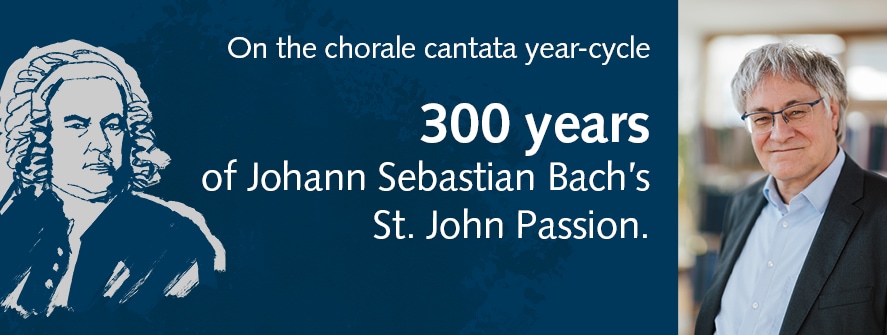
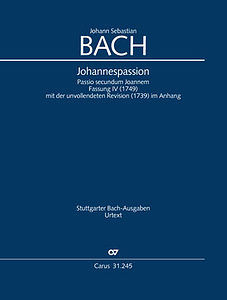
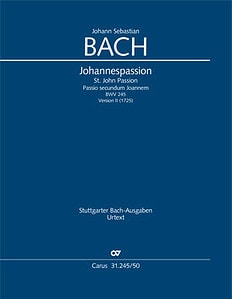
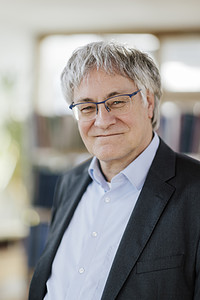
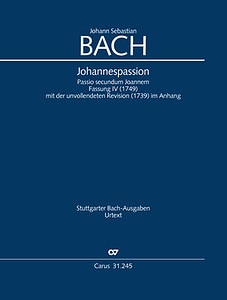
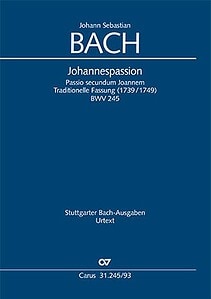
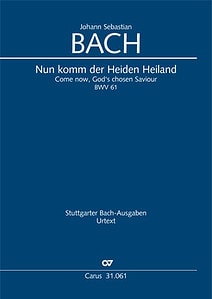
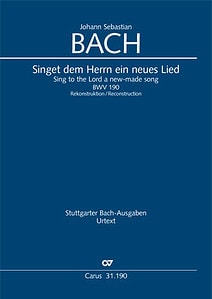
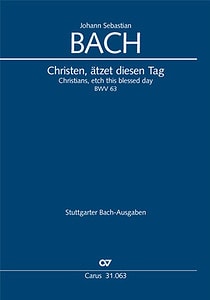
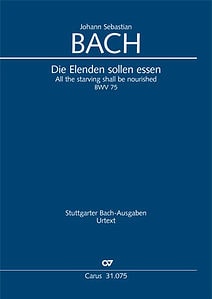
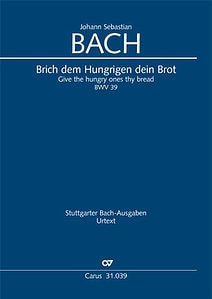
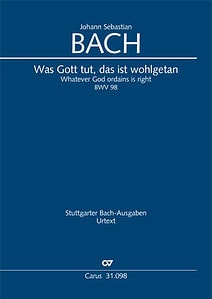


Leave a Reply
Want to join the discussion?Feel free to contribute!